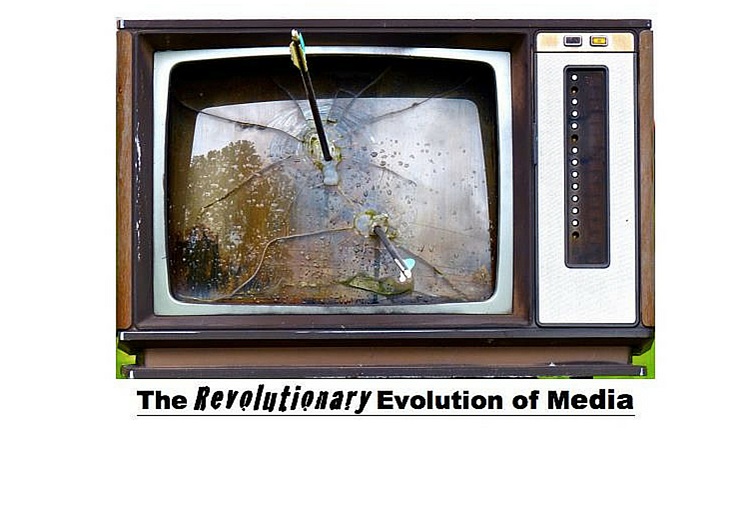TREotM: The 2nd Decade of the 21st Century

Chapter 12, Part 1
This is a book in progress. Go here to read it from the beginning.
As we ended last December of 2009, the biggest merger bust in history busted up … yes, AOL Time Warner jettisoned AOL. (“You’ve got mail … and less!”) Time Warner, under Jeffrey Bewkes, returned to its production roots; this time with Turner Broadcasting’s networks including CNN, TBS and TNT.
The second decade dawned with 98.9% penetration by TVHH in the US. Some 115,990 million of the 117,220,000HH had at least one television set … 82.9% had more than one set and 61.9% had a VCR and/or a DVD player or subscribed to a DVR provider.
At the end of the 3rd Quarter in 2010, 93.4 million TVHH subscribed to the nation’s top 14 pay TV providers. The ten MSOs in the top group had 58% of them. Satellite (DBS) providers accounted for 38% while newly-overbuilding telco providers claimed 6%. Analog was slipping; digital was growing. Most of all, MSOs were beginning to accelerate their emphasis on broadband provisions. Year-over-year though, telco providers were solidly growing as they expanded their territories served. (Note: Unlike cable provider franchises that required the entire city, town or county limits to be served, telco franchise rules allowed cherry-picking prosperous neighborhoods; or, put another not so nice way, redlining.)
This week we’ll look at the changes in the distribution, or conduit, side. Next week we’ll look at programming and other media.
The top video providers in 2010 were (Source: CTAM Pulse ©MediaCensus):
Video Provider Subscribers
Comcast 22,939,000
DIRECTV 18,934,000*
DISH 14,289,000*
Time Warner Cable 12,551,000
Cox Cable 4,968,257
Charter 4,652,700
Cablevision 3,043,000
Verizon FiOS 3,290,000
Bright House 2,194,397
AT&T U-verse 2,739,000
Mediacom 1,203,000
Suddenlink 1,228,300
Insight 698,700
Cable One 650,902
Top MVPDs 93,381,256
*DBS, once known as “don’t be silly” became “done be smart” with digital compression.
Though the deal Comcast made to buy 51% of NBC from GE had been announced in 2009, it wasn’t until January of 2011 that it was completed. Just a couple of years later, Comcast acquired the rest of the company. NBC is now a wholly-owned subsidiary of Comcast. The move by a distributor to acquire a broadcaster, cablecaster and owner of studios was exactly the opposite move that AOL Time Warner had taken as it spun off both its cable operations and its internet activities in AOL.
As the decade advanced, it got hard to tell just who was in which business doing what. In other words, the methods of distribution were in flux. About mid-way through the decade, for example, Comcast was the largest cable operator, the largest provider of Wi-Fi hotspots, the 6th largest provider of telephony (Voice over Internet Protocol – VoIP, in this case) and the largest provider of broadband access.
Additionally, size of the company got ever more important.
The man and company that sold TCI to the original AT&T had turned their attention to international efforts growing to be Europe’s largest cable operator. Sensing an opportunity in the US again, Liberty Global’s Dr. John Malone made a significant investment in Charter and installed recent Cablevision CEO Tom Rutledge at the top of that company. Not long afterward, Charter made a bid to acquire the much larger Time Warner Cable. In order to achieve regulatory authority, Charter initiated conversations with Comcast to sell some of the potential acquired systems to it … but Comcast decided it wanted the whole enchilada. But after a very long and expensive lobbying effort, both the Justice Department and the Federal Communications Commission expressed reservations about one company controlling so much of America’s broadband access and Comcast reluctantly withdrew.
That gave Charter another chance … this time it made another, friendly offer and is now facing the same regulatory scrutiny as it attempts to grow significantly combining its subscribers with both Time Warner Cable’s and the smaller Bright House’s subs.
Meanwhile, DISH had long hoped to add cellular to its satellite offerings, but even a relentless acquisition of spectrum left watching from the sidelines as AT&T, with 116.6 million mobile subscribers and some 5.8 million video/FTTC (fiber to the curb) subscribers made the nascent dream come true via the purchase of DIRECT’s 20.3 million video subscribers in mid-2015. That gave AT&T access to every household in the US by two delivery systems: satellite and cellular.
Here’s how the top five providers, in millions, ranked by mid-decade (SNL Kagan):
TV Provider Subs Telco Provider Subs Broadband Provider Subs
AT&T+DIRECTV 26.1 Verizon Wireless 120.0 Comcast 21.2
Comcast 22.5 AT&T Wireless 116.6 AT&T 16.4
DISH 14.0 Sprint 54.8 Time Warner Cable 12.0
Time Warner Cable 11.2 T-Mobile 45.0 Verizon 9.0
Verizon FiOS 5.8 AT&T Wired 15.3 CenturyLink 6.0
Of note, Comcast is the #7 telco provider with 11 million Voice-over-Internet-Protocol (VoIP) landline subscribers. Should Charter succeed in its acquisitions, it would become the 3rd largest TV provider, out of the top 10 in telco, but #2 in broadband with 17.8 million subs.
Next week: Chapter 12, Part 2 – The Content Side of the Business
The opinions and points of view expressed in this commentary are exclusively the views of the author and do not necessarily represent the views of MediaVillage/MyersBizNet management or associated bloggers.


